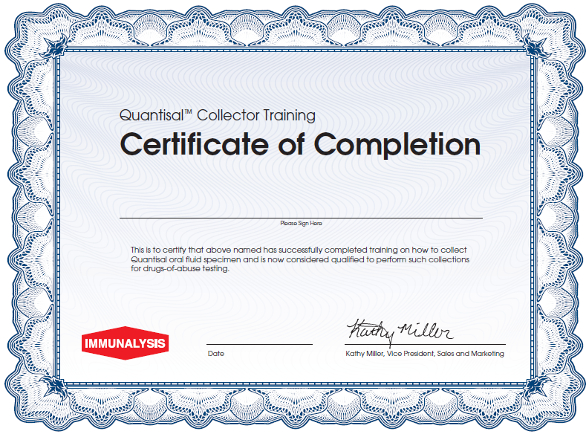
Sampling oral fluids for drugs of abuse is quick and easy and greatly reduces the likelihood of sample adulteration. Until recently, however, assays using oral fluid sampling have only been a threshold or qualitative test. In addition, the relationship of oral fluid concentration to blood concentration for many potential analytes has not been established. This is a problem when results for an oral fluid sample need to be related to minimum actionable concentrations in specific matrices such as blood or urine levels prescribed by law.
With all the advantages of oral fluid as a matrix for drugs of abuse, first-generation methods did not control volume, making it difficult to estimate drug concentration. While any detectable amount may be suitable in some situations, such as for screening employees, impairment is generally a function of concentration, hence the need for a timely sampling method that controls volume. Camille Cohier and colleagues at Paris-Diderot University evaluated the Quantisal and Concateno Certus oral fluid collection device (both from Alere Toxicology, Waltham, Mass.) for the quantitative assay of illicit drug use.1 Both are simple to use and appear to offer tamperproof, convenient and private chain of custody. After about 10 minutes of instruction online, I took a test and received a Quantisal Collector Training Certificate of Completion (Figure 1).
 Figure 1 – Certificate of completion of training for Quantisal oral fluid collection. Training and test took less than 15 minutes.
Figure 1 – Certificate of completion of training for Quantisal oral fluid collection. Training and test took less than 15 minutes.As with an oral thermometer, both devices are designed to be placed under the subject’s tongue to collect fluid. The collector contains a hydrophilic sorbent. It takes only about two minutes for the liquid to wick up to the capillary at the end that protrudes from the subject’s lips. When the fluid approaches the end, it hydrates a moisture indicator, which turns blue to indicate the fill volume has been reached. Next, the device is removed and placed into a purpose-designed transport tube. The level indicator capillary is broken off and the collection tube is closed and sealed with a tamper-indicating tape. After being initialed by the subject, the specimen is transported to the lab for analysis by gas or liquid chromatography with mass spectrometric detection, depending upon the target analytes (panels include opiates, cannabinoids, amphetamines and cocaine, including metabolites).
Performance evaluation
Volume
Collection volume for the Certus was 0.94 ± 0.18 mL; for Quantisal the volume was 0.84 ± 0.06 mL; %RSD was 19 and 6.7%, respectively. Quantisal’s published specification2 is 1.0 mL ± 10%.
Drug recovery
Drug recovery depends upon the analyte. Taking Δ9-tetrahydrocannabinol as an example, the recovery for Quantisal was 94% and for the Certus was 54%. Volume and recovery need to be figured in when evaluating the suitability of oral fluid samples for assays near the detection or control limit.
Sample storage time and temperature were important factors also. With the exception of methadone, storage at 4 °C gave better stability than room temperature. Methadone seemed to adhere to the device materials at 4 °C. After storage for seven days, the concentrations of all drugs decreased from the day 1 values. Alere cites a three-day maximum storage time.
The authors point out that their study did not include evaluation of oral fluid samples collected at roadside.
Summary
The two oral fluid collection devices from Alere Toxicology facilitate collection of oral fluids for quantitative analysis of illicit drugs. These should be evaluated for performance, with complete workflows starting with roadside collection to trial. Further study will be required to meet the Daubert motion challenges (the Daubert standard provides a rule of evidence regarding admissibility of expert witness testimony during federal legal proceedings).
References
- Cohier, C. Mégarbane et al. http://jat.oxfordjournals.org/content/early/2016/09/27/jat.bkw100.abstract
- http://www.alere.com/en/home/product-details/QuantisalOralFluidCollectionDevice-au.html
Robert L. Stevenson, Ph.D., is Editor Emeritus, American Laboratory/Labcompare; e-mail: [email protected]